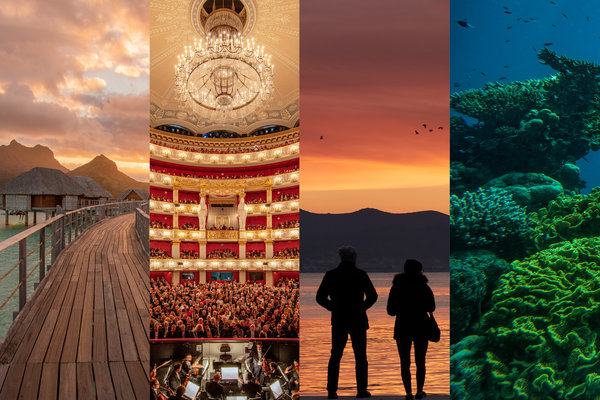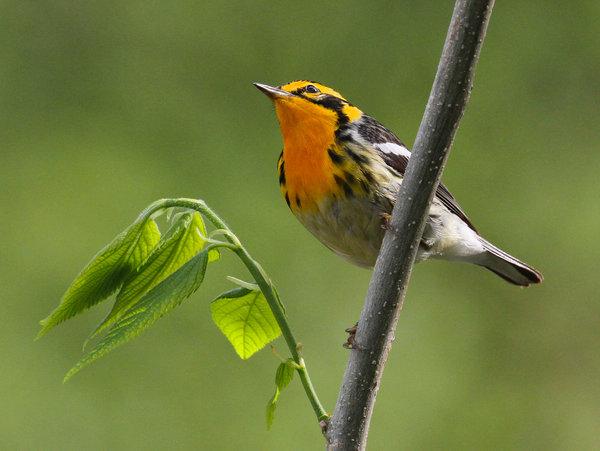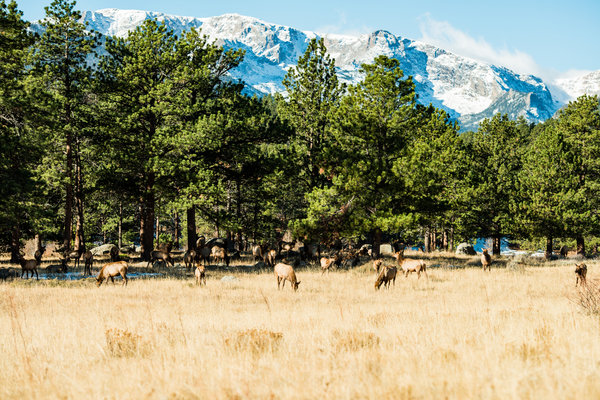It’s peak bird-watching season in North America. As millions of birds in the Americas migrate to their summer homes now through May, millions of bird-watchers are taking up binoculars and cameras to spot the Sandhill cranes, Red-Shouldered hawks and thousands of other species flying above.
But all year, hotels and resorts across the country have been taking notice of this nature-loving demographic, offering educational weekends, bird-watching tours and even full-time birders on staff. Others have taken efforts to preserve acres of land, establish birding trails and offer free bird-focused hikes.
Bird-watching tours did not exist before the 1970s, according to Kenn Kaufman, field editor for the National Audubon Society. “The interest in bird-watching has really exploded,” he said.
David La Puma, director of New Jersey Audubon’s Cape May Bird Observatory, said that many bed-and-breakfasts in the area now cater specifically to birders.
“The tourism industry has started to make itself more attractive to this community because birders are determined and focused and want to be in a place that’s best for birding,” he said.
“They want to be up when the birds are up and get their meals in between, and their routine priorities are a little different than [those of] other tourists,” he said.
Here are some hotels and resorts across the country with dedicated birding programs:
‘Birding on Skis’
If you like to add a winter sport to your bird-watching, the Alta ski resorts in Utah host a “Birding on Skis” program, the second Monday of every month from September through April.
The program, a partnership of the ecologist Maura Olivos and a local nonprofit called the Tracy Aviary, is aimed at amateur birders.
Participants should plan to be outside for three hours, and be at an elevation of more than 10,000 feet.
“We see a lot of high-elevation birds on these trips,” said Ms. Olivos, “including Clark’s Nutcracker, Mountain Chickadees and several species of rosy finches including the rarer black rosy finch.”
Ms. Olivos has noticed an increased interest in these trips, which are publicized at nearby hotels and lodges. “When we started it in the winter of 2014, we had maybe three or four people who showed up; now we get about 20,” she said.
Free. Participants need to register in advance here.
A Birding Weekend in the Hudson Valley
At Mohonk Mountain House in New Paltz, N.Y., Kurt Weiskotten — an environmental scientist based in Albany — has curated “Birding & Spring Nature” weekends for the past 30 years.
Events include morning and evening bird walks; a program organized by the Cornell Raptor Program to learn about hawks, owls and falcons; and a demonstration of how to record bird songs. The next “Birding & Spring Nature” occurs May 17-19.
Free to resort guests, room rates start at approximately $700.

Up Close and Personal in Michigan
Huron House, a bed-and-breakfast in Oscoda, Mich., located in the middle of the Huron-Manistee National Forest, hosts birders who come to the Tawas Point Birding Festival in May.
“Our area is considered a ‘hot-spot’ where up-close sightings are virtually guaranteed,” said Al Heminger, owner of the 14-room inn. He added that the Kirtland Warbler and several different varieties of owls are inhabitants of the national forest.
“It’s not uncommon for our guests to see over 150 species during a spring migration visit,” he said.
The “What a Hoot” package, organized in part with the Michigan Audubon Society, includes accommodations for two nights, a symbolic adoption certificate for a Northern Saw-Whet Owl and a photo of the owl.

A Blackburnian Warbler, spotted in Ohio.CreditKenn Kaufman
Learn About Falconry in the Rocky Mountains
While falconry is generally not considered a typical birding activity, there has been a recent fascination in the sport. Last year, the Broadmoor in Colorado Springs, Colo., hired its second falconer, Deanna Curtis.
Ms. Curtis, a stay-at-home mother until she fell in love with birds of prey, offers a 1.5 hourlong hawk walk throughout the year.
The property has two saker falcons, four Harris’s hawks, a Eurasian eagle owl and a barn owl that Curtis often brings with her.
“Falconry has a rich history that goes back over 4,000 years,” said Ms. Curtis, and during the tour “we go over the recovery of peregrine falcons and different hunting styles.”
Guided tours begin at $162 per person.



Take to the Trails Yourself
Other lodges, like Casitas de Gila in Gila, N.M., offer birding informally. The proprietor of the five-casitas inn, Michael O’Connor, said that the area near the Gila River is known for its diversity, and that guests come from all over the country to spot more than 341 species.
“We provide bird seed and trail maps and birders just do their own thing,” he said.
In the Northeast, visitors flock to the Notchland Inn in Harts Location, N.H., to spot a diverse group of bird species in the surrounding White Mountain National Forest. On select dates in early June, guests can join a guided van tour to view the Rare Bicknell Thrush during nesting season. But according to the inn’s proprietor, Leslie Schoof, other bird fans come throughout the year.
“Many often come to the inn to check off their bird lists; we give them maps and show them the good locations,” she said.
Rare Bicknell Thrush tour from $50 per person, advance registration required.
52 PLACES AND MUCH, MUCH MORE Follow our 52 Places traveler, Sebastian Modak, on Instagram as he travels the world, and discover more Travel coverage by following us on Twitter and Facebook. And sign up for our Travel Dispatch newsletter: Each week you’ll receive tips on traveling smarter, stories on hot destinations and access to photos from all over the world.






